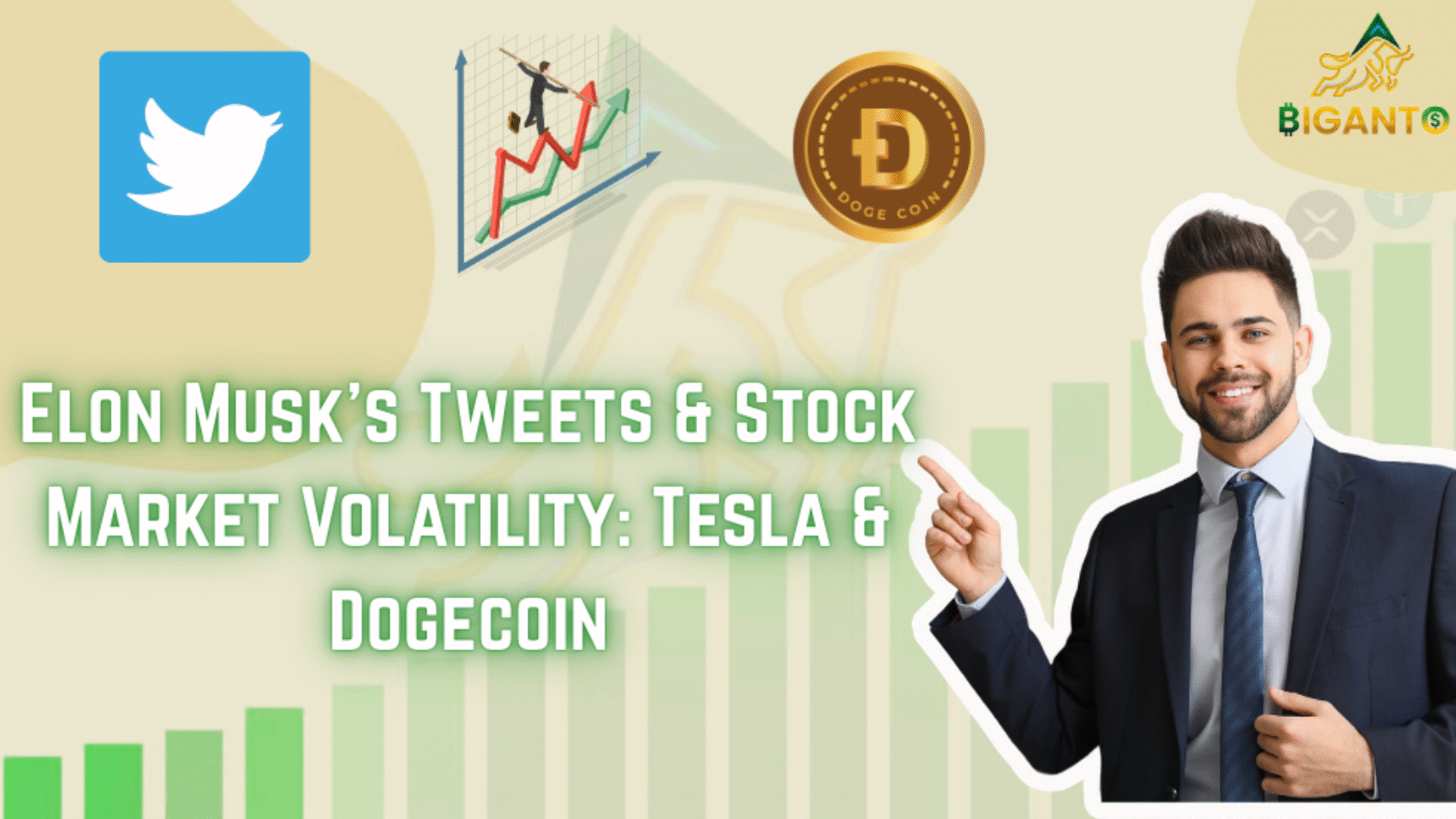Introduction
Few individuals have the power to move crypto markets with a single sentence, but Elon Musk is undeniably one of them. Whether announcing Tesla’s payment policies or posting a playful Dogecoin meme, Musk’s Twitter activity has repeatedly triggered sharp movements in crypto market trends and even influenced Tesla’s stock price. As one of the world’s wealthiest individuals and a widely regarded technological visionary, Musk commands a social media following of over 110 million users on Twitter (now X). He frequently uses this platform to share opinions on a range of topics, including cryptocurrencies such as Bitcoin and Dogecoin.
Tesla Moves When Musk Tweets
Elon Musk is one of the rare CEOs who has had such a significant and frequent impact on the share price of his company in the stock market. Within minutes, his tweets about Tesla caused headlines, sell-offs, and spikes in the financial media.
Musk’s tweet, Tesla stock price is too high imo, on May 1, 2020, is among the most notorious instances. The response was immediate: within hours, Tesla’s stock fell by almost 10%, depleting its market value by billions. Investors were taken aback not only by the statement’s directness but also by the fact that the CEO said it.
The news wasn’t always negative. When Musk tweeted in October 2021 that Tesla had secured a huge order from Hertz, a deal for 100,000 vehicles, the stock shot to a new all-time high and the company’s market capitalization for the first time surpassed $1 trillion. The tweet generated a surge of optimistic market sentiment and reaffirmed Tesla’s position as a market leader in EVs.
Elon Musk stated in a tweet in August 2018 that he was “thinking about taking Tesla private at $420.” Funding has been obtained. In a single afternoon, this announcement caused Tesla’s stock price to jump by over 6%. Many others took the tweet to be an official announcement, which sparked a flurry of trading activity. The deal never happened, though, as it became out that the funding was not actually obtained. As a result of this incident, shareholders filed a lawsuit, claiming that the deceptive tweet caused them to lose money.
The Rise of the DOGE Father (2021)
If 2021 had a cryptocurrency mascot, it was undoubtedly Dogecoin and Elon Musk was its loudest cheerleader. Musk’s tweets that year regularly sent Dogecoin price soaring, sometimes within minutes.
In February 2021, a single post I’m getting a Shiba Inu #resistanceisfutile delivered a 50% bump, taking DOGE from $0.04 to $0.06, and racking up more than 100,000 retweets. It’s hard to say how many people discovered Dogecoin for the first time that day, but the impact on market sentiment was undeniable.
Sometimes, Musk’s tweets triggered chain reactions beyond Dogecoin itself. His Shiba Inu mention inspired a rush of new meme-based tokens, including Shiba Inu (SHIB) — named after the breed of the original “Doge” meme. SHIB tripled in value following that one post and now sits among the world’s top cryptocurrencies by market cap, surpassing the valuations of some established companies.
By December 2021, Musk took things a step further, tweeting Tesla will make some merch buyable with Doge & see how it goes. That one line sparked a 43% DOGE rally, injecting real-world utility into the token as Tesla began accepting it for merchandise. Market enthusiasm echoed again when Mark Cuban praised DOGE’s low transaction fees in February 2022, resulting in a 78% jump.
The first quarter of 2021 alone was packed with viral Musk moments:
No highs, no lows, only Doge (Feb 4, 2021) ~50% price surge
Bought some Dogecoin for lil X, so he can be a toddler hodler (Feb 10, 2021) double-digit gains
Doge meme shield (legendary item)(Mar 1, 2021) market spike
These tweets came within four weeks of each other and fueled DOGE’s unlikely climb to a market cap that briefly exceeded some of the world’s oldest banks. But as with most parabolic rallies, gravity eventually took over. DOGE now trades more than 80% below its May 2021 all-time high and has struggled to reignite during the current bull run.
The frenzy also had legal consequences. A group of investors filed a $258 billion lawsuit accusing Musk of using his pedestal as the world’s richest man to operate and manipulate the Dogecoin pyramid scheme. Musk’s legal team continues to fight for the case’s dismissal but the episode cemented his role in one of the most remarkable meme-fueled surges in cryptocurrency market history.
Investor Takeaways from Musk’s Market-Moving Tweets
Compliance with Securities Law
The importance of securities laws in preserving the integrity of the market is shown by this case. Executives of publicly traded companies have a fiduciary obligation to shareholders to make sure that comments made in public are truthful and not deceptive.
The SEC created a precedent that social media posts are regarded as official corporate communications when it fined Musk and Tesla $20 million apiece and forced Musk to resign as chairman in the funding secured episode.
Influence from Celebrities and Finfluencers
The power of social media in the crypto market is testament to the general lack of regulation and maturity, and the inherent liquidity of 24/7, permissionless assets.
Musk’s celebrity profile in technology and finance had a big impact on investor mood even when he wasn’t working in an official company position, especially in speculative markets like cryptocurrencies.
The Application of Behavioral Finance
A good illustration of behavioral finance concepts like emotional decision-making, herd behavior, and FOMO (fear of missing out) is the Musk Effect on Dogecoin.
A purchasing frenzy sparked by a single tweet could cause prices to rise quickly before experiencing similarly abrupt corrections.
The speculative character of some assets
Dogecoin was developed as a joke and has no inherent value, in contrast to Tesla stock, which can be assessed using financial fundamentals.
Because of this, its price is very sentiment-driven and more susceptible to abrupt swings brought on by tweets.
Conclusion
The case studies of Dogecoin and Tesla offer important insights on how social media, powerful people, and financial markets are changing. They emphasize the necessity for authorities to adjust to a new era of communication and for investors to discern between social media hype and verifiable facts. In the end, these instances are a potent reminder that, in the digital world of today, a single tweet can instantly and significantly affect millions of investors as well as the whole economy.

